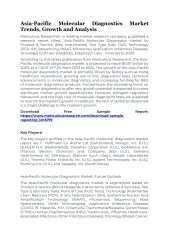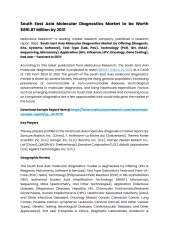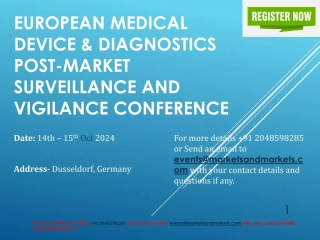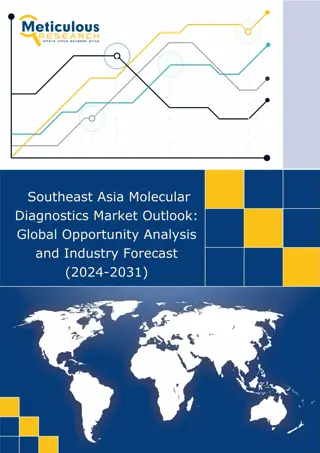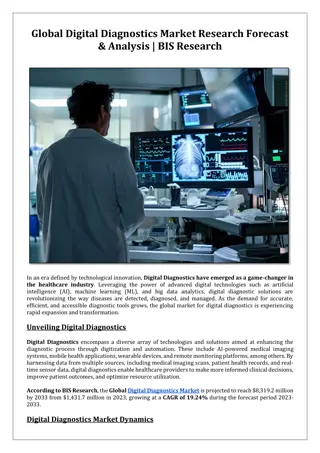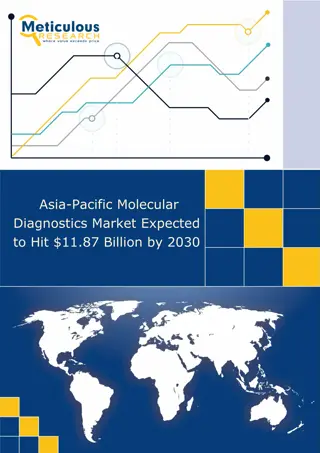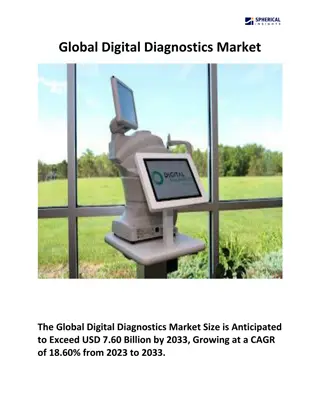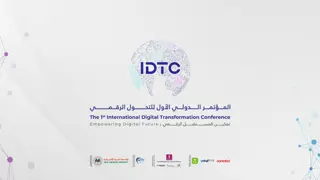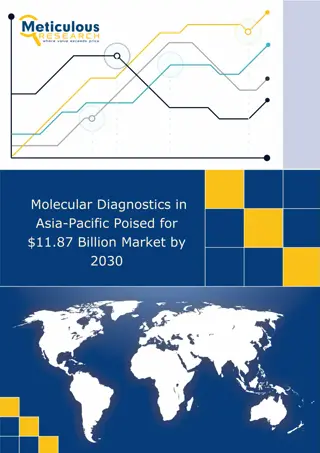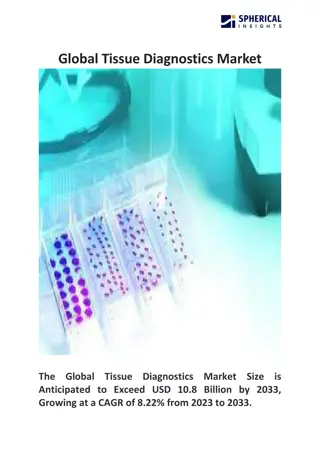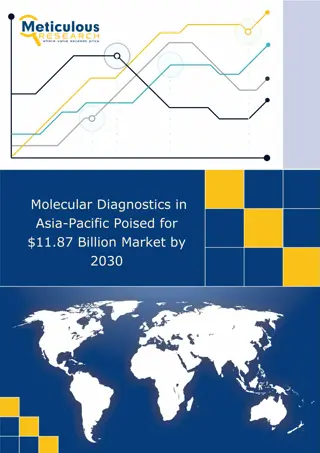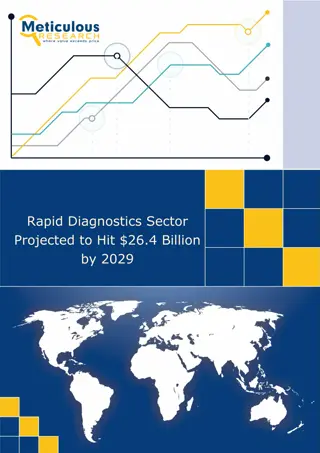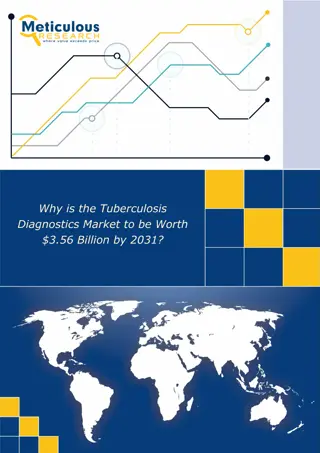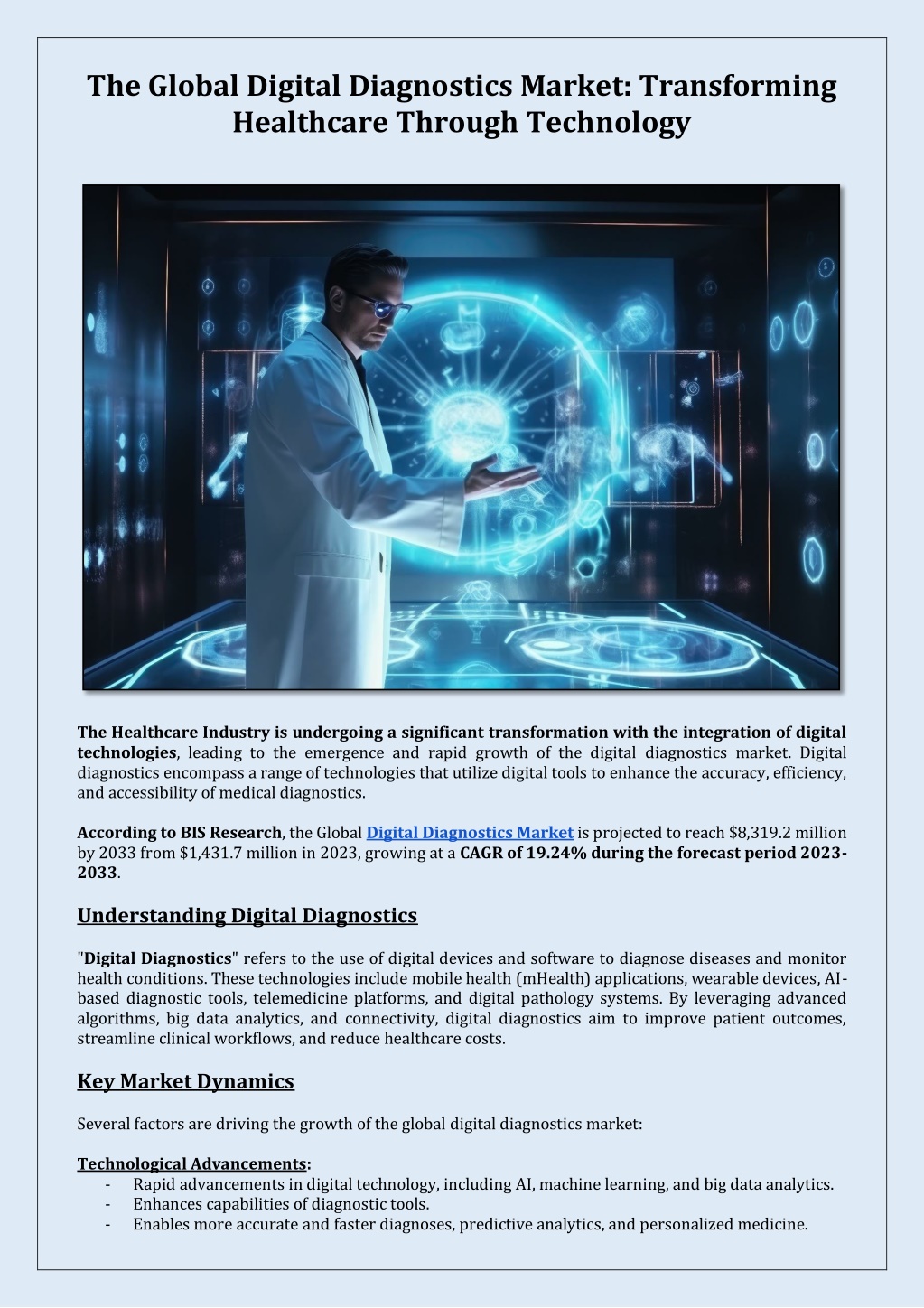
Global Digital Diagnostics Market: Transforming Healthcare Through Technology
According to BIS Research, the Global Digital Diagnostics Market is projected to reach $8,319.2 million by 2033 from $1,431.7 million in 2023, growing at a CAGR of 19.24% during the forecast period 2023-2033.
Uploaded on | 1 Views
Download Presentation

Please find below an Image/Link to download the presentation.
The content on the website is provided AS IS for your information and personal use only. It may not be sold, licensed, or shared on other websites without obtaining consent from the author. Download presentation by click this link. If you encounter any issues during the download, it is possible that the publisher has removed the file from their server.
E N D
Presentation Transcript
The Global Digital Diagnostics Market: Transforming Healthcare Through Technology The Healthcare Industry is undergoing a significant transformation with the integration of digital technologies, leading to the emergence and rapid growth of the digital diagnostics market. Digital diagnostics encompass a range of technologies that utilize digital tools to enhance the accuracy, efficiency, and accessibility of medical diagnostics. According to BIS Research, the Global Digital Diagnostics Market is projected to reach $8,319.2 million by 2033 from $1,431.7 million in 2023, growing at a CAGR of 19.24% during the forecast period 2023- 2033. Understanding Digital Diagnostics "Digital Diagnostics" refers to the use of digital devices and software to diagnose diseases and monitor health conditions. These technologies include mobile health (mHealth) applications, wearable devices, AI- based diagnostic tools, telemedicine platforms, and digital pathology systems. By leveraging advanced algorithms, big data analytics, and connectivity, digital diagnostics aim to improve patient outcomes, streamline clinical workflows, and reduce healthcare costs. Key Market Dynamics Several factors are driving the growth of the global digital diagnostics market: Technological Advancements: - Rapid advancements in digital technology, including AI, machine learning, and big data analytics. - Enhances capabilities of diagnostic tools. - Enables more accurate and faster diagnoses, predictive analytics, and personalized medicine.
Rising Prevalence of Chronic Diseases: - Increasing incidence of chronic diseases such as diabetes, cardiovascular diseases, and cancer. - Drives demand for efficient diagnostic solutions. - Digital diagnostics offer continuous monitoring and early detection, crucial for managing chronic conditions. Increased Adoption of Telemedicine: - COVID-19 pandemic accelerated telemedicine adoption. - Highlights the importance of remote diagnostic tools. - Facilitates remote consultations and monitoring. - Makes healthcare more accessible, especially in rural and underserved areas. Patient-Centric Healthcare: - Growing emphasis on patient-centric care. - Patients are more involved in their health management. - Digital diagnostic tools empower patients with real-time health data. - Enables informed decisions and active engagement with healthcare providers. Cost Efficiency and Operational Benefits: - Reduces need for in-person visits. - Lowers healthcare costs. - Optimizes clinical workflows. - Automated diagnostic processes minimize human error and increase healthcare delivery efficiency. Want to excel in the market? Request for a Sample Research PDF Report on Digital Diagnostics Market Research. Global Digital Diagnostics Industry Segmentation Segmentation by Technology: - Wearable Devices - Mobile Health (mHealth) Apps - AI-Based Diagnostic Tools - Digital Pathology Systems - Telemedicine Platforms Segmentation by Application: - Cardiology - Oncology - Diabetes Management - Radiology Segmentation by End-User: - Hospitals - Diagnostic Laboratories - Homecare Settings - Specialty Clinics Segmentation by Region: - North America - Europe - Asia-Pacific - Latin America and Middle East & Africa Global Market Challenges and Opportunities
While the digital diagnostics market presents substantial opportunities, it also faces several challenges: Data Privacy and Security: The collection and storage of sensitive health data raise concerns about data privacy and security. Ensuring robust cybersecurity measures is crucial to protect patient information. Regulatory and Compliance Issues: Navigating the complex regulatory landscape for digital health solutions can be challenging. Compliance with varying regulations across regions requires significant effort and resources. Integration with Existing Systems: Integrating digital diagnostic tools with existing healthcare infrastructure and electronic health records (EHR) systems can be complex and costly. Conversely, the market presents numerous opportunities: AI and Machine Learning Innovations: Ongoing advancements in AI and machine learning will enhance diagnostic accuracy, predictive capabilities, and personalized treatment plans. Expansion in Emerging Markets: Improving healthcare infrastructure and rising awareness in emerging markets present significant growth opportunities for digital diagnostic solutions. Collaborations and Partnerships: Partnerships between technology companies, healthcare providers, and research institutions can drive innovation and market penetration. Focus on Preventive Healthcare: Increasing emphasis on preventive healthcare and early diagnosis will drive the adoption of digital diagnostic tools. Also Read: Digital Diagnostics Market to Hit $8.31 Billion by 2033 Future Market Prospects The future of the global digital diagnostics market looks promising, with several trends likely to shape its trajectory: Personalized Medicine: The shift towards personalized medicine will drive the development of tailored diagnostic tools that cater to individual patient needs. Remote Monitoring and Telehealth: Continued growth in telehealth and remote monitoring will expand the use of digital diagnostics, making healthcare more accessible and convenient. Integration with Wearable Technology: The integration of advanced sensors and analytics in wearable devices will enhance continuous health monitoring and real-time diagnostics. Enhanced Data Analytics: Improved data analytics and interoperability will enable better integration of diagnostic data into clinical workflows, enhancing decision-making and patient outcomes. Conclusion The Global Digital Diagnostics Industry is poised for significant growth, driven by technological advancements, rising prevalence of chronic diseases, increased adoption of telemedicine, patient-centric healthcare, and cost efficiency. By addressing challenges related to data privacy, regulatory compliance, and system integration, and leveraging opportunities in AI innovation, emerging markets, collaborations, and preventive healthcare, the potential of digital diagnostics in transforming healthcare can be fully realized.


